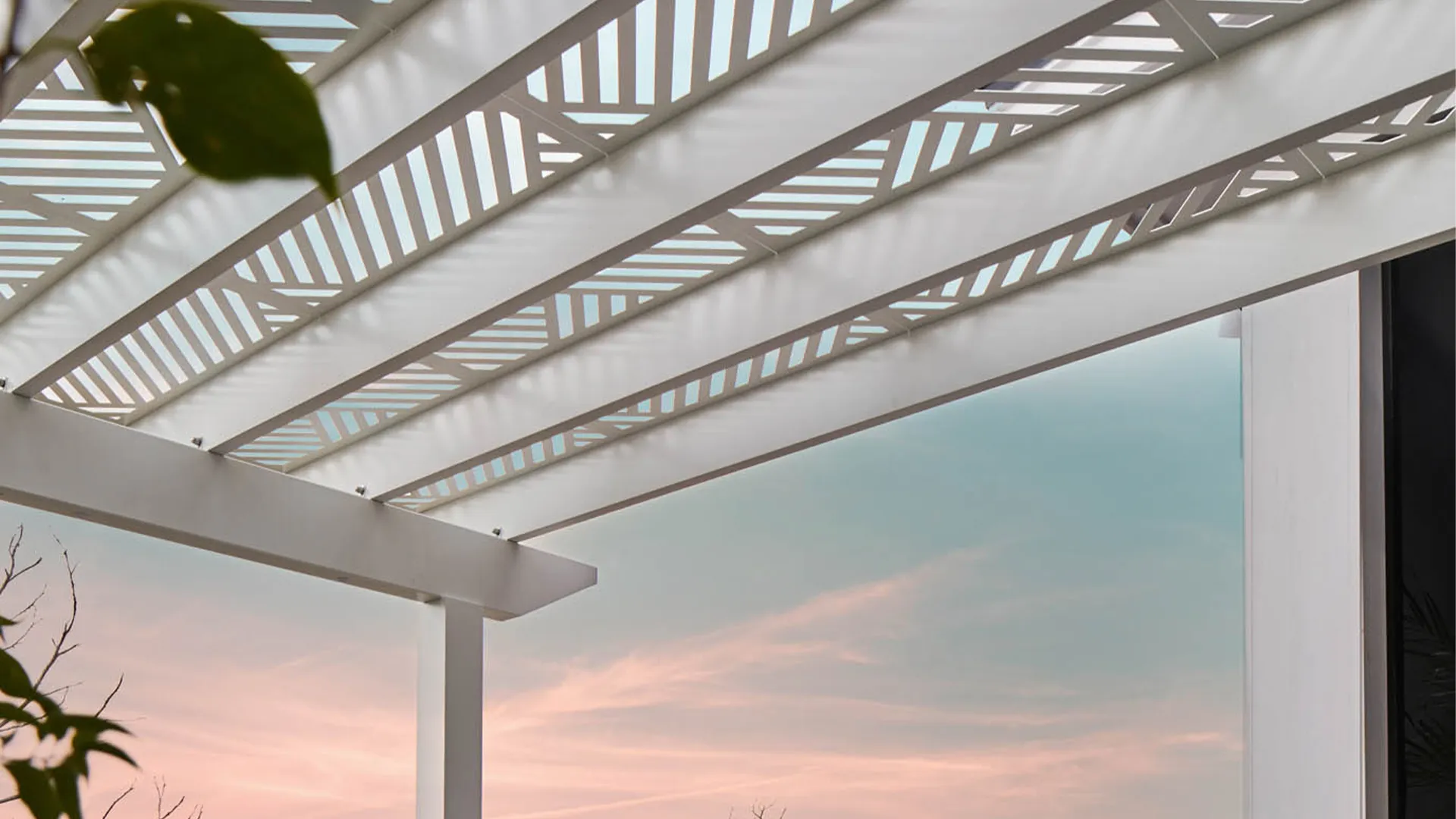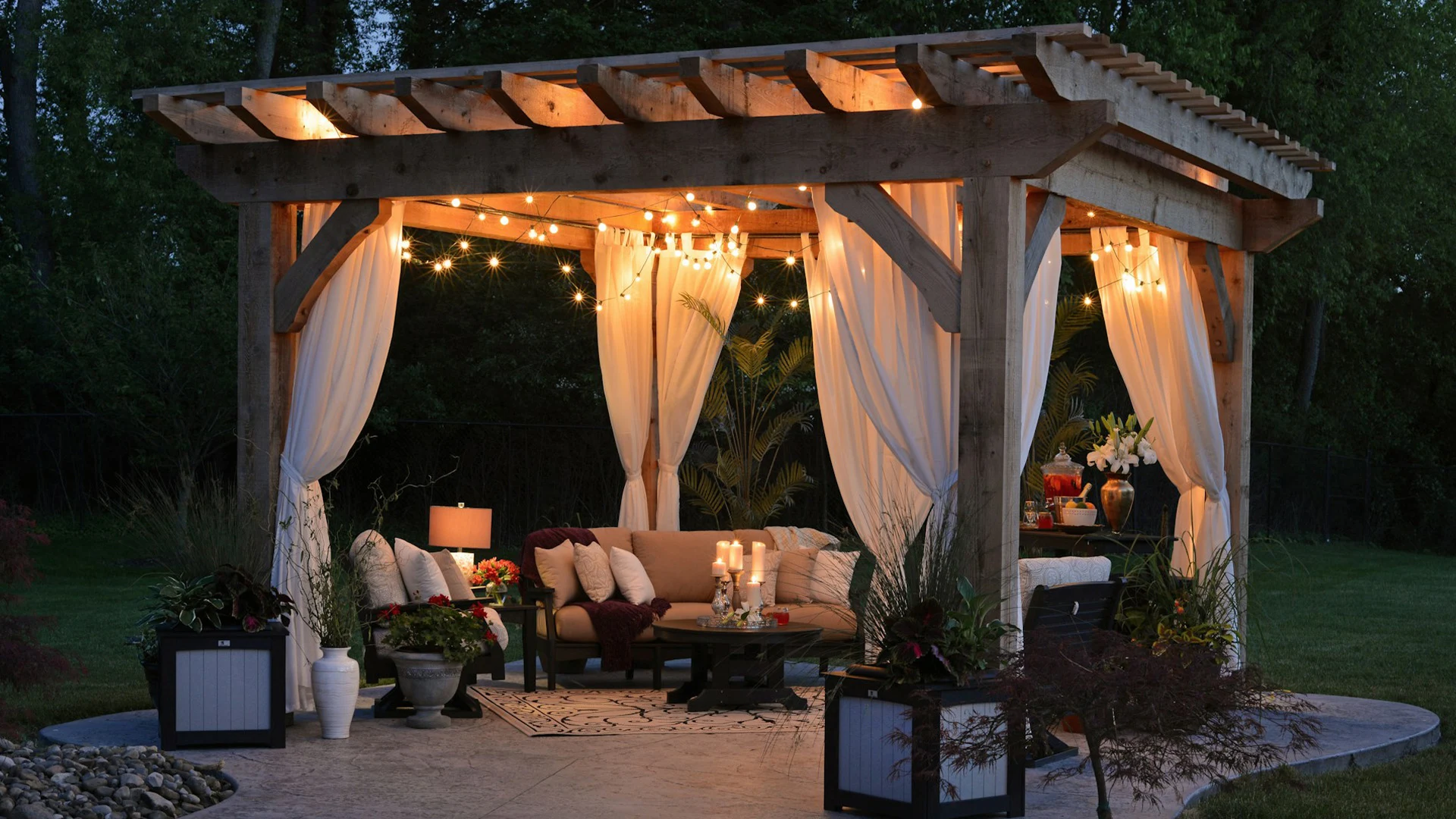A Complete Patio Cover Materials Guide
Creating the perfect outdoor living space often centers around installing a patio cover (sometimes as a pergola, or shade structure), but many homeowners discover too late that their material choice leads to unexpected maintenance burdens. The truth about patio cover materials and their long-term care requirements often remains hidden until after installation, when the real work begins.

The Hidden Costs of Traditional Materials
Traditional wooden patio covers remain popular due to their natural appeal and seemingly affordable cost. However, ongoing maintenance requirements create significant expenses over time. A standard wooden patio cover typically demands annual sealing and maintenance with costs mounting as the structure ages. Regular maintenance includes waterproofing, structural inspections, and periodic replacement of damaged sections. These maintenance requirements can transform an apparently budget-friendly patio cover into a long-term investment that consumes both time and money.
Modern Material Options
Vinyl Composites: The New Generation
Modern vinyl composite patio covers provide excellent protection with minimal maintenance requirements. These materials resist UV damage and never need painting or sealing. While premium grades offer superior performance, they command higher prices. Homeowners should carefully consider the grade of vinyl composite, as lower-quality options may experience fading or structural issues over time.
Fiberglass: Light and Strong
One of the biggest advantages of fiberglass is its durability, lightweight and strength. Unlike wood, it won’t rot or warp, and it’s resistant to rust and insects. It’s also super easy to maintain—just wash it occasionally with soap and water. Fiberglass patio covers are made from reinforced plastic with embedded glass fibers. They have a UV-resistant coating, which helps them stand up to sun exposure. They can also mimic the look of wood or metal, giving you a stylish finish that matches your outdoor space.

Cellular PVC: A Premium Choice
For those seeking the ultimate in low-maintenance options, cellular PVC presents a compelling choice. This material completely resists moisture damage and maintains its appearance without painting or sealing. The authentic wood-like appearance satisfies aesthetic preferences while eliminating traditional maintenance headaches. Despite higher upfront costs, the long-term value often justifies the investment.
Aluminum: The Champion
Aluminum structures offer a genuine maintenance-free benefits with exceptional durability. The material’s strength-to-weight ratio makes it ideal for most residential applications. While the initial investment runs higher than wood, aluminum patio covers resist rust, eliminate rot concerns, and maintain their appearance without requiring regular upkeep.
As one of the most recycled building materials globally, aluminum patio covers are an environmentally conscious choice. The material can be recycled indefinitely without losing quality, and most aluminum products today contain high levels of recycled content, significantly reducing their environmental footprint compared to resource-intensive traditional materials.
However, some homeowners find the modern appearance less appealing than traditional materials.
Making the Smart Choice: Essential Considerations
Your local climate plays a crucial role in material selection. Hot, sunny regions demand excellent UV resistance, while wet climates require superior moisture protection. Cold climate installations must account for material expansion and contraction. Beyond weather considerations, evaluate the total ownership cost, including installation, maintenance, and expected lifespan.
Practical Selection Guidelines
Research online reviews focusing on long-term performance, and seek references for installations over five years old. Verify warranty coverage details in writing, ensuring you understand exactly what protection you’re receiving. Some manufacturers offer hybrid solutions combining different materials for optimal performance and longevity.
Looking Ahead: Future-Proof Your Investment
When selecting patio cover materials, consider their adaptability for future modifications and compatibility with outdoor living trends. Environmental sustainability and potential impact on property value should factor into your decision-making process. The growing popularity of outdoor living spaces suggests continued innovation in patio cover materials and design options.
The Bottom Line: Invest Smart, Relax Later
While premium, low-maintenance materials may cost more initially, they often prove more economical over time. Understanding the true maintenance requirements and lifecycle costs helps ensure a wise investment. Focus on materials offering proven durability, minimal maintenance needs, and comprehensive warranty coverage. By making an informed choice today, you’ll enjoy your outdoor living space without the burden of constant upkeep tomorrow.
Remember that selecting the right patio cover involves balancing immediate costs against long-term benefits. Invest time in research and material comparison to ensure your investment enhances your home’s value while minimizing future maintenance demands.